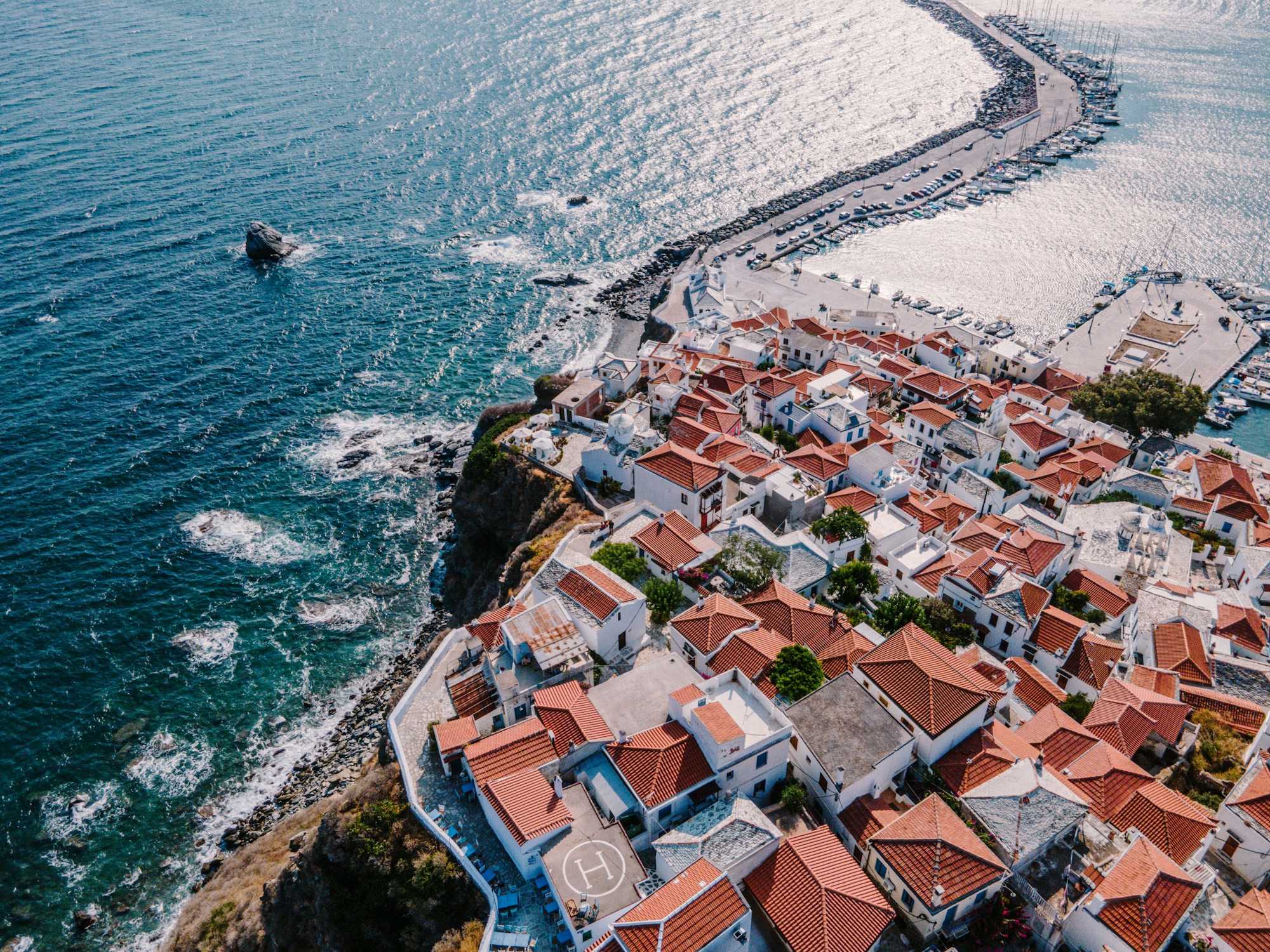Discover Skopelos: History, Customs, and Festivals Guide
Explore Skopelos: Unveil its rich history, unique customs, and vibrant festivals in our comprehensive guide.

Discover Skopelos: History, Customs, and Festivals Guide
Welcome to Skopelos, a vibrant island located in the Northern Sporades of Greece, adorned with rich history, intriguing customs, and lively festivals. This comprehensive travel guide will take you through the essential aspects that make Skopelos a must-visit destination. From delving into its historical background to exploring its unique cultural practices and annual festivities, you will be well-prepared to immerse yourself in the enchanting charm of this Greek paradise.
History of Skopelos
Ancient Times
Skopelos boasts a history that stretches back to ancient times. The island was initially known as Peparethos, named after its first settler, Peparethos, who was the brother of Skopelos’ legendary king, Staphylos. Archaeological evidence points to inhabitation during the Neolithic period and the Bronze Age.
Classical and Hellenistic Periods
During the Classical era, Skopelos thrived due to its strategic location and fertile lands. It was particularly renowned for its wine production, which gained fame across the ancient world. Coins minted during this period often depicted grapes and grapevines, signifying the island's economic foundation.
Medieval and Ottoman Influence
The Middle Ages saw Skopelos come under Byzantine control, followed by periods of Venetian and Ottoman influence. Each era left its mark, with Byzantine churches and Venetian castles still standing as testaments to these times. The Venetian fortress, located in Chora, is a highlight, offering panoramic views of the island.
Modern Era and Greek Independence
With the onset of the Greek War of Independence in the 19th century, Skopelos played its part and eventually became a part of the modern Greek state. Today, while retaining its historical charm, the island has adapted to the needs of tourism, beckoning thousands of visitors annually.
Customs and Cultural Practices
Daily Life
The daily life in Skopelos is a perfect blend of tradition and modernity. The islanders maintain a relaxed pace, cherishing a strong sense of community.
- Siesta Time: The afternoon siesta is a sacrosanct tradition. From 2:00 PM to 5:00 PM, many shops close, and towns become quieter as people take a nap, resting from the midday heat.
- Fishing Traditions: Fishing remains a vital part of life on Skopelos. Early morning trips to the Mediterranean waters to catch fresh fish are a common sight at the island’s ports.
Architecture
The architectural style of Skopelos is characterized by its charming whitewashed houses, with wooden balconies and terracotta roofs, often adorned with flowers. The winding cobblestone streets of the capital, Chora, are designed to protect from the summer sun and the winter winds, reflecting the island's pragmatic approach to architecture.
Culinary Delights
Skopelos' cuisine is a mouthwatering reflection of its geography and history. With an abundance of olive groves, vineyards, and orchards, the island's food is a celebration of fresh, locally sourced ingredients.
- Crispy Cheese Pie (Tiropita): A must-try delicacy, made with locally produced cheese wrapped in crispy phyllo dough and deeply fried until golden brown.
- Plum Dishes: Skopelos is famous for its plums, often stewed or used in sauces to accompany meats or fresh desserts like plum pie.
- Local Wine: Historically known for its wine, sampling the local varieties is an integral part of the culinary experience. Don’t miss the fruity and aromatic flavors that have been cherished since antiquity.
Festivals and Celebrations
Easter Celebrations
Easter is the most important religious holiday in Skopelos, celebrated with great zeal. During Holy Week, the island comes alive with candlelit processions, traditional hymns, and various religious services interspersed with festive activities.
- Good Friday Procession: Locals join the solemn evening procession through the streets, carrying the epitaphios (a decorated bier symbolizing Christ's tomb).
- Midnight Resurrection Service: At midnight on Holy Saturday, the church bells ring joyously, signaling Christ's resurrection. Fireworks light up the sky, and people embrace and exchange the joyful greeting, "Christos Anesti" (Christ is Risen).
Feast of Agios Riginos
Agios Riginos, the patron saint of Skopelos, is celebrated on February 25th. The feast includes a religious procession to the monastery dedicated to the saint, followed by communal feasting and traditional dances.
Skopelos Cultural Festival
Held annually in July and August, the Skopelos Cultural Festival celebrates the island’s artistic heritage. With events ranging from live music performances, theatrical plays, art exhibitions, and traditional dance shows, this festival attracts visitors from all over the world to experience the rich cultural tapestry of Skopelos.
Local Anecdotes and Interesting Facts
- Mamma Mia! Filming Location: Fans of the movie Mamma Mia! will recognize Skopelos as the fictional "Kalokairi" island. Key scenes were shot at various locations, including the picturesque Agios Ioannis Chapel.
- Piracy Legends: Skopelos' history is replete with tales of pirates. The island's rugged coastline and numerous coves served as hideaways for pirates plundering the Aegean Sea during the Medieval period.
- Natural Beauty: The island is covered in dense forests of pine trees, making it one of the greenest in the Aegean. Hiking trails across the island offer breathtaking views of the turquoise waters and lush landscapes.
With its rich historical context, distinct cultural practices, vibrant festivals, and captivating legends, Skopelos invites you to delve deeper and explore its myriad charms. Whether you're wandering through the historic streets, sampling its culinary delights, or participating in its lively traditions, Skopelos promises an unforgettable experience.
